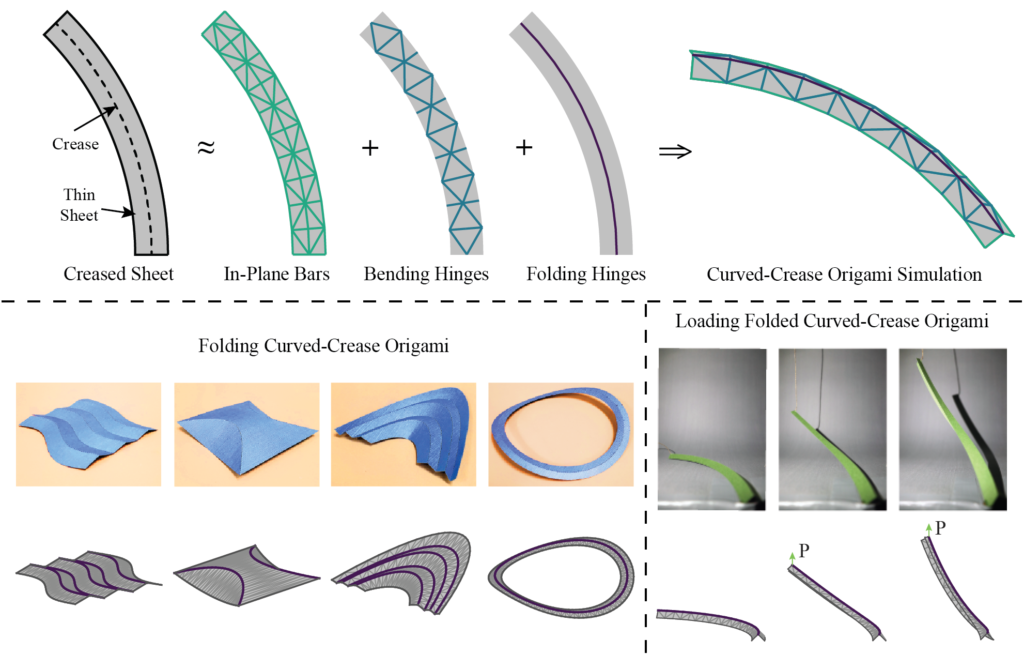Bar and hinge modeling of curved-crease origami

The ability to model the physical response of curved-crease origami is essential to understanding the advantages and limitations of these structures. An optimal modeling process gives accurate results, like deflections due to an applied force or strain energy in a sheet. Additionally, an optimal modeling process is fast and gives results in a matter of seconds. However, there is a fundamental trade-off between accuracy and speed. Thus, a high-fidelity model, like a finite element shell model, will require large amount of computation time to model simple folding, but will give detailed results about the stresses and strains in the model. Furthermore, high-fidelity models usually perform poorly under large deformations – like folding from a flat sheet. For many curved-crease origami, finite elements takes too long and might not reach a fully folded state.
An alternative to high-fidelity modeling is bar and hinge modeling. This method ignores the fine-grain details of strain distribution in a sheet by lumping deformations into truss bars, bending hinges, and folding hinges. My research in bar and hinge models has calibrated element stiffness for curved-crease origami and gives results in a matter of seconds.
Bar and hinge models allow engineers to model curved-crease origami starting from flat sheets using elastic material properties and prescribed fold angles. Because the analysis is simplified, the results give approximate values of global forces and displacements in the structure. The bar and hinge method is a useful tool for modeling curved-crease prototypes quickly and reliably. Once the design space is narrowed, engineers can perform more detailed analyses to finalize the design.
Because the bar and hinge method is a physics-based process, the program can model both the folding process and the post-folding structural behaviors of the fold pattern. The feature opens up research into the structural properties of curved-crease origami to better understand how these geometries can be used in engineering designs.
Related publications
A bar and hinge formulation for structural analysis of curved-crease origami
Curved creases redistribute global bending stiffness in corrugations: theory and experimentation